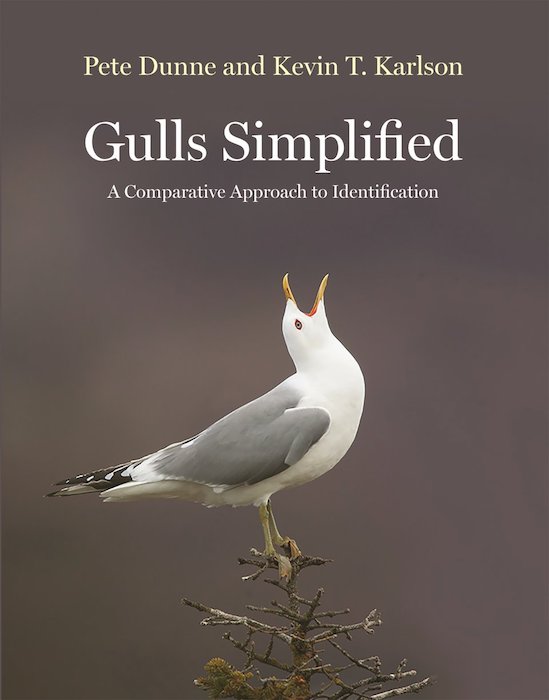Gulls Simplified: A Comparative Approach to Identification
By Pete Dunne & Kevin T Karlson | Princeton University Press | 2018 | Paperback | 208 pages, 330 colour photos | ISBN: 9780691156941

The Publisher’s View: This unique photographic field guide to North America’s gulls provides a comparative approach to identification that concentrates on the size, structure, and basic plumage features of gulls-gone are the often-confusing array of plumage details found in traditional guides.
Featuring hundreds of colour photos throughout, Gulls Simplified illustrates the variations of gull plumages for a variety of ages, giving readers strong visual reference points for each species. Extensive captions accompany the photos, which include comparative photo arrays, digitized photo arrays for each age group, and numerous images of each species-a wealth of visual information at your fingertips. This one-of-a-kind guide includes detailed species accounts and a distribution map for each gull.
An essential field companion for North American birders, Gulls Simplified reduces the confusion commonly associated with gull identification, offering a more user-friendly way of observing these marvellous birds.
Other Views: “Dunne and Karlson’s beautiful and engaging book fills a need and will be much appreciated by the birding community.“
– Dennis Paulson, author of Shorebirds of North America
“Gulls Simplified fills a major hole in the birder’s library. Dunne and Karlson share the joys and challenges that make gull watching so much fun.“
– Derek Lovitch, author of How to Be a Better Birder
The Authors: Pete Dunne is Birding Ambassador at Large for New Jersey Audubon. His books include: Hawks in Flight, Birds of Prey (with Kevin T. Karlson), and Pete Dunne’s Essential Field Guide Companion.
Kevin T. Karlson is an accomplished birder, tour leader, and wildlife photographer. His books include the Peterson Reference Guide to Birding by Impression and The Shorebird Guide.
Fatbirder View:I saw the title and snatched this up as for me, gulls are among the most difficult group of birds to ID. It’s not as though they don’t try to help, spending so much time loafing around among others of their kin. Maybe it’s the fact that almost all are black and white and grey with a touch of yellow or pink in legs and beaks. Given that they are long lived birds that take a number of years to mature I’m dumbfounded by a group of sub adult gulls which just look an amorphous mass. Anything that simplifies their ID has to be a great help. Imagine my disappointment when I realised this is about the gulls one can expect to encounter in northern America. So there are some we share, but a lot we don’t and some of the trickiest species, for me at least, like the various recent splits from Herring Gull are just not covered. How am I to distinguish between a pale Lesser Black-back and a dark Yellow-legged? I cannot pretend to get that excited anyway. I admire gulls as incredibly adaptable and intelligent, long-lived, far ranging and life’s triers… if the pair that lost their one chick down the chimney they were nesting on in sight of my office window are anything to go by. They are fine birds but just not a group I find exciting. Living on the coast means I encounter many but only find myself lingering on as I search for purple sandpipers on the rocks or to tick-off a few for my year list. Clearly, I’m in no position to judge whether this really does simplify ID. So, dear reader, I leave it to you to discover for yourselves.
Buy this book from NHBS Fatbirder
